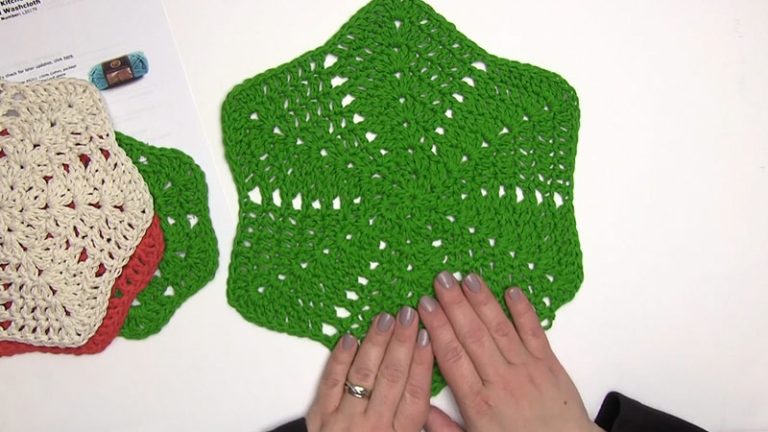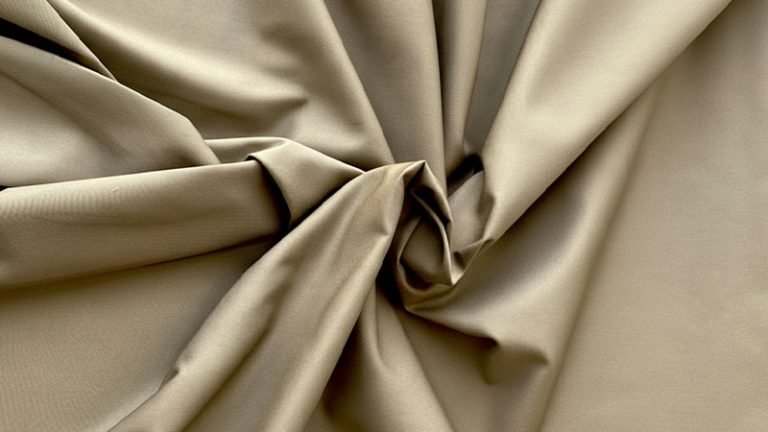Chino fabric is more than just a material; it represents a fusion of practicality and understated elegance. Its widespread adoption in casual wear has made it a familiar sight globally, but what exactly defines this remarkable textile?
At its core, Chino fabric is characterized by its durable twill weave construction. This particular weaving technique creates a diagonal ribbed pattern, lending the fabric exceptional strength and a distinctive texture.
While often associated with the khaki or tan hues that historically defined it, Chino fabric is versatile and can be found in a variety of different tints of hue beyond these traditional earth tones.
A key aspect of Chino fabric’s appeal is its composition. It is typically made of 100% cotton, a natural fiber known for its breathability and comfort.
Furthermore, the fabric often undergoes a process called mercerization, which is instrumental in enhancing its qualities.
As a result of this treatment, the fabric receives a subtle gloss, adding a touch of sophistication to its otherwise casual appearance.
This mercerization process also increases the fabric’s strength, dye uptake, and luster, contributing to its overall durability and visual appeal.
It’s important to note the dual meaning often associated with the term. While we primarily discuss the textile itself, the word “chinos” can also be used to refer to a pair of pants that are constructed from chino fabric.
These pants, which have recently seen a surge in demand in the world of casual fashion, exemplify the fabric’s adaptability and popular resurgence.
Understanding this dual identity is crucial for appreciating the fabric’s journey from military utility to a contemporary fashion icon.

A Journey Through Time: The Rich History of Chino Fabric
The story of Chino fabric is deeply intertwined with military history, showcasing how practical innovation can seamlessly transition into widespread civilian adoption.
Its origins are not merely functional but also culturally significant, reflecting global manufacturing and linguistic evolution.
Military Origins: From China to Camouflage
The name “Chino” originates from its birthplace—China—where the fabric was first produced. Spanish speakers called the pants pantalones chinos (“Chinese pants”), later shortened to “chinos” in English.
Originally developed for military use, Chino fabric’s cotton twill weave offered soldiers durability, comfort, and freedom of movement.
Its muted earth tones marked a shift from bright, conspicuous uniforms toward early camouflage, giving troops a tactical advantage by blending into their surroundings.
Global Military Adoption and Transition to Casual Wear
Chino fabric’s practicality led the UK and US militaries to adopt it as standard uniform material in the late 1800s, solidifying its military reputation.
After World War II, returning soldiers popularized chinos in civilian life, valued for their comfort, durability, and clean design.
Today, chinos have seen a resurgence in casual fashion, proving their timeless appeal and adaptability far beyond their military origins.
The Distinctive Qualities: What Makes Chino Fabric Stand Out?
Chino fabric’s enduring popularity is not merely due to its history but profoundly rooted in its intrinsic qualities. These characteristics contribute to its comfort, aesthetic appeal, and widespread utility. Understanding these features helps explain why Chino has remained a preferred choice for various applications, particularly in apparel.
Texture and Appearance: A Blend of Comfort and Refinement
Chino fabric combines softness with durability, offering comfort against the skin despite its sturdy twill weave.
Mercerization enhances both its smooth handfeel and gentle sheen, giving it a refined yet versatile look.
This subtle luster allows chinos to transition easily from casual to smart-casual settings, making them suitable for both relaxed and polished occasions.
Drape and Breathability: Practicality Meets Comfort
Chino fabric drapes smoothly, conforming to the body for a flattering, comfortable fit. Its cotton twill weave offers both durability and breathability, allowing air circulation to keep the wearer cool while withstanding frequent wear and washing. This blend of strength, comfort, and style makes it ideal for versatile, everyday apparel.
From Military Uniforms to Everyday Style: Applications & Usage

The durability and style of Chino fabric have secured its place in apparel manufacturing. From its military roots to modern wardrobes, its adaptability makes it a fashion staple.
Primary Application: The Enduring Chino Pant
The chino pant remains the fabric’s most iconic use, originating from military uniforms where comfort, durability, and ease of movement were key. Today, it offers a cleaner, more structured alternative to denim, easily transitioning from casual to smart-casual wear.
Versatility in Modern Fashion: A Canvas for Style
Beyond pants, Chino fabric’s softness, breathability, and ability to take on rich colors make it ideal for various casual and smart-casual garments. Its blend of comfort and polish ensures ongoing relevance in creating timeless, versatile clothing.
Maintaining Your Chinos: Essential Care Instructions for Longevity
To ensure that garments made from Chino fabric retain their quality, appearance, and longevity, proper care is essential. Cotton, the primary material for Chino fabric, has specific characteristics that necessitate particular washing and drying methods to prevent shrinkage and maintain fabric integrity.
Stain Treatment and Washing Guidelines
Treat stains promptly using a Stain Solution or Wash & Stain Bar before washing. Turn garments inside out to protect the surface and preserve color. Wash with similar colors and fabrics to avoid bleeding and damage. For dingy or dull chinos, add an oxygen-based bleach alternative to brighten without fading.
Drying and Shrinkage Considerations
While chinos can handle tumble drying, cotton is prone to shrinkage—high heat causes dramatic shrinkage, while low heat shrinks gradually. To reduce wrinkles and make ironing easier, remove items damp or line dry. For tailoring, pre-shrink by washing and drying on hot before adjustments.
Wrinkle Removal: Achieving a Polished Finish
Iron chinos on the highest setting or use steam to release wrinkles. Steaming is gentler and helps maintain the fabric’s sheen. Proper care ensures your chinos retain their quality, fit, and style.
Exploring Fabric Options and Sourcing: A Global Network of Sustainable Choices

For fashion designers, apparel manufacturers, and clothing brands seeking high-quality and sustainable Chino fabric, specialized B2B fabric sourcing platforms have become invaluable resources. These platforms provide access to a diverse range of materials, including innovative sustainable alternatives.
Fabriclore is a leading B2B fabric sourcing platform dedicated to empowering fashion designers, apparel manufacturers, and clothing brands worldwide. They offer an extensive collection that goes beyond conventional textiles, providing options that cater to the growing demand for sustainable materials. Their offerings include:
- Natural fibers such as Cotton fabric, linen fabric, and silk fabric. While conventional cotton is widely used, the availability of Organic Cotton specifically caters to sustainable choices, minimizing the use of pesticides and synthetic fertilizers.
- Man-made fibers such as viscose and polyester.
- A strong emphasis on sustainable options like LENZING™, LIVA™, and BEMBERG™ Cupro. These are often cellulosic fibers derived from responsibly managed forests, offering environmentally friendlier alternatives with excellent drape and feel.
Fabriclore provides comprehensive services to facilitate seamless fabric sourcing for businesses globally. They offer 4 key services designed to meet diverse production needs:
- Dyeable Fabric: This includes Woven RFD (Ready for Dyeing) & Greige fabrics, as well as Sustainable and Knitted Fabric options, providing a base for custom dyeing and finishing.
- Dyed Fabric: For those needing pre-colored materials, they offer Mill Dyed, Yarn Dyed, Schiffli, & Denim Fabric. This allows for immediate use in production, streamlining the manufacturing process.
- Made To Order: This service allows for customized textile creation, including Digital Printing, Screen printing, Block printing, and dyeing solutions. This is particularly valuable for brands seeking unique designs and specific aesthetic outcomes. Fabriclore also lists various printing techniques like Indigo Dyeing & Printing, Ajrak Block Printing, Kalamkari Block Printing, Ikat Weaving and Printing, Bagh Dyeing & Printing, and Dabu Printing, showcasing a blend of traditional and modern methods.
- Ready Stock: For immediate needs, they provide Block, Screen, Ikat, Tweed, & Jaquard fabrics, ensuring quick turnaround times for collections.
Fabriclore’s commitment to supporting fashion businesses is evident in their global reach. They facilitate wholesale fabric sourcing globally, serving fashion designers, apparel manufacturers, and clothing brands in numerous countries and cities. Their network spans continents, including key locations like:
- North America: Wholesale Fabric supplier USA (Los Angeles, New York), Canada (Toronto). Fabric Wholesale in Dallas Texas, Chicago Illinois, Santa Fe, New Mexico, Houston, Phoenix, Atlanta Georgia, Miami, Florida, Ocean City, New Jersey. Indian Fabric Suppliers for Private Label Brands USA, Garment & Clothing Manufacturer in USA, Garment & Clothing Manufacturer in Los Angeles.
- Europe: Wholesale Fabric supplier UK (London), Italy, Poland, Portugal, Turkey, Spain, Romania, France, Germany, Netherlands, Bulgaria. Fabric Wholesale in Albania, Armenia, Azerbaijan, Belarus, Bosnia & Herzegovina, Croatia, Cyprus, Czech Republic, Estonia, Greece, Hungary, Kazakhstan, Kosovo, Slovenia, Ukraine, Malta, Norway, Oman, Qatar, Saudi Arabia, Switzerland, Yugoslavia.
- Asia & Middle East: Wholesale Fabric supplier China (Shanghai), Asia, UAE (Dubai, Abu Dhabi), Middle East. Fabric Wholesale in Sri Lanka, Malaysia, Hong Kong, Singapore, Thailand, Philippines, Indonesia.
- Australia & Oceania: Wholesale Fabric supplier Australia (Canberra, Sydney), New Zealand. Fabric Wholesale in Melbourne (Fitzroy, Collingwood).
- Africa: Fabric Wholesale in Kenya, Tunisia, Turkmenistan, Algeria, Angola, Botswana, Egypt, Gabon, Libya, Mauritius, Namibia, Nigeria.
- South America: Fabric Wholesale in Chile, Colombia (Bogota), Costa Rica, Cuba, Dominican Republic, Ecuador, Peru, Uruguay, Venezuela, Brazil.
- Other key regions: Trinidad & Tobago, Israel, Kuwait, Luxembourg, Jamaica, Jordan, Lebanon.
- Major Indian cities: Wholesale Fabric supplier Mumbai, Delhi, Bengaluru, Ahmedabad, Surat, Chennai, Kolkata, Jaipur, Pune, Hyderabad, Ajmer, Jodhpur, Udaipur, Chandigarh, Gurgaon, Lucknow, Indore, Kota, Ludhiana, Jalandhar, Goa, Patiala, Amritsar, Kanpur.
This extensive reach ensures that businesses worldwide can access diverse, high-quality, and increasingly sustainable fabric options, including those suitable for Chino production.
Fabriclore’s emphasis on seamless, authentic, and affordable fabric sourcing makes it a crucial partner for fashion businesses navigating the complexities of modern supply chains.
Conclusion: Embrace the Enduring Style of Chino
Chino fabric’s journey from a rugged military textile to a cornerstone of global casual fashion underscores its unmatched blend of functionality, comfort, and timeless style.
Its soft yet durable nature, graceful drape, and versatile appeal make it an enduring choice for both designers and consumers.
By understanding its history, unique qualities, and proper care techniques, we can preserve its beauty and longevity.
With sustainable sourcing options now widely available, incorporating Chino into wardrobes and collections not only celebrates its heritage but also supports a more responsible fashion future.
Chino fabric remains a symbol of refined simplicity, adaptable elegance, and conscious craftsmanship for generations to come





